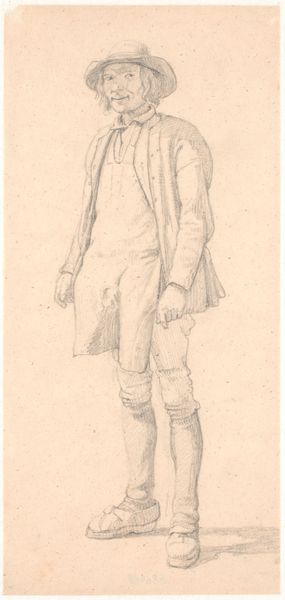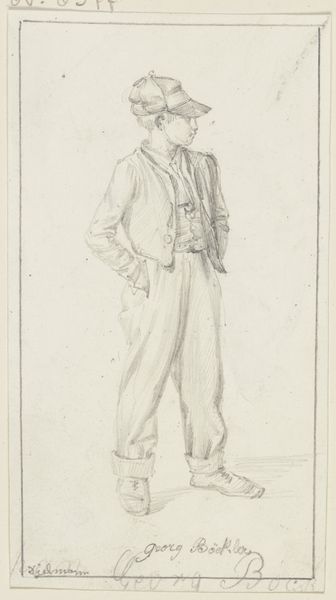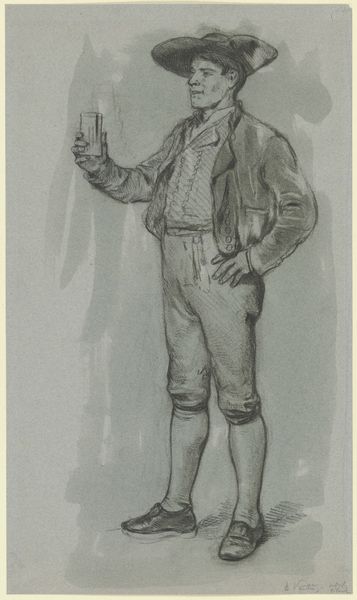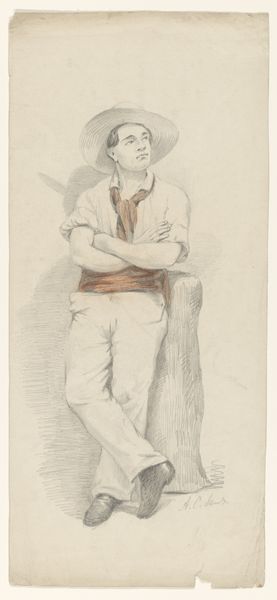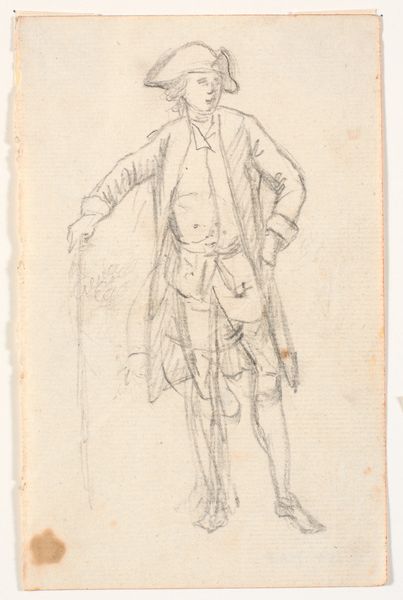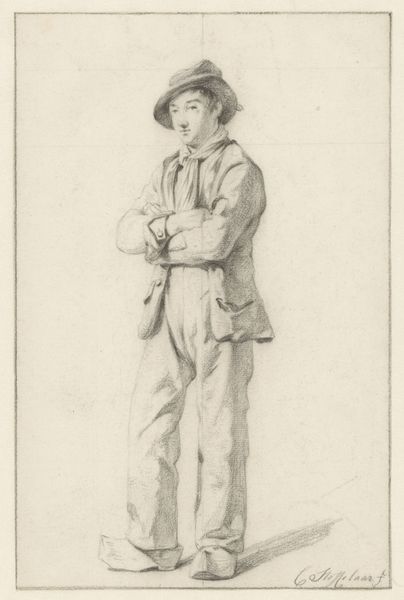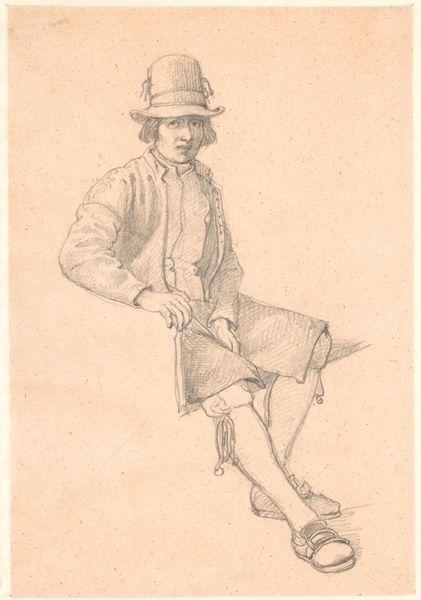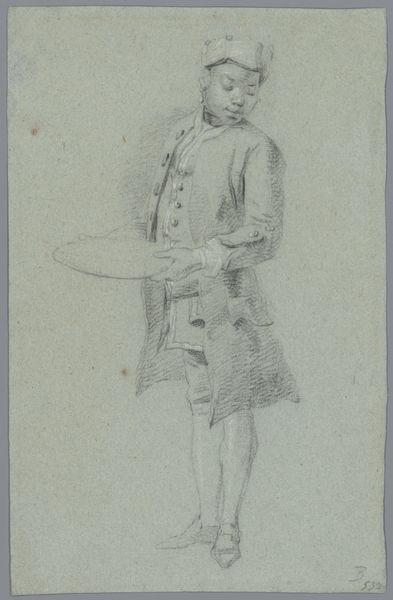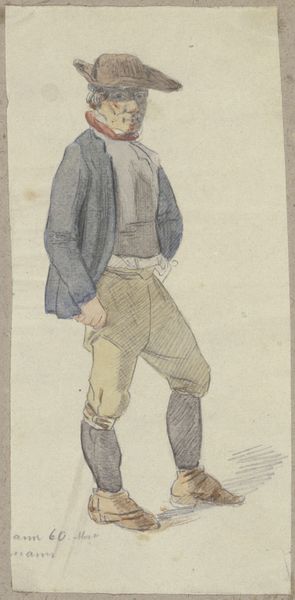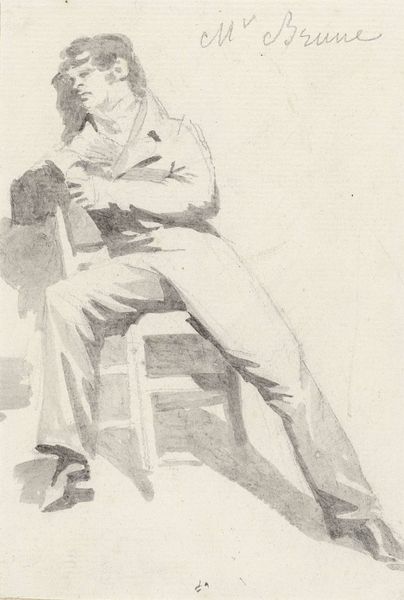
drawing, pencil
#
portrait
#
pencil drawn
#
drawing
#
pencil sketch
#
pencil drawing
#
pencil
#
realism
Dimensions: 205 mm (height) x 118 mm (width) (bladmaal)
Curator: This drawing, "Dreng, der læner sig mod et bord," which translates to "Boy Leaning Against a Table," is by Hans Smidth and dates to the 1860s. It’s a pencil drawing, currently held at the SMK, the National Gallery of Denmark. Editor: It feels intimate. Like a snapshot, a glimpse into the everyday life of a young boy. The medium itself, pencil on paper, emphasizes the immediacy, doesn't it? Curator: Absolutely. The choice of pencil as the medium tells us something about the artist's process, doesn't it? This wasn't meant as a finished, public-facing masterpiece, but possibly a preparatory study or even just a personal observation rendered quickly and directly. We should remember that pencils, as a relatively cheap and easily portable medium, were transforming artistic practices around this period, and opening up new venues and demographics. Editor: Precisely. Notice how the social status of the subject isn't immediately apparent? His attire suggests a certain level of... practical functionality. Consider also that art academies at the time often required rigorous study of the human form. Was this boy from Smidth’s close environment or did the artist select him in order to train his skills, thereby turning a personal experience into work. Curator: The boy's leaning posture, the somewhat unfinished quality of the lines, contributes to the realism. This drawing captures a transient moment. And it suggests the kind of conditions of art-making within institutions: materials available to students, class divisions between portrait and genre art etc. Editor: His expression is so thoughtful. It captures the social context in a subtle manner. Is it possible the artwork aimed at subtly engaging with contemporary conversations on childhood, education, class mobility? Curator: Possibly. Smidth’s own biography might shed some light there, the institutional background too. Editor: Well, this piece definitely invites us to contemplate on both the individual within a social frame, and the material practice that brought him to life in pencil. Curator: Indeed, a fleeting encounter etched into paper, reminding us of the layers of artistic decision, available material and context at play, in something seemingly simple.
Comments
No comments
Be the first to comment and join the conversation on the ultimate creative platform.
